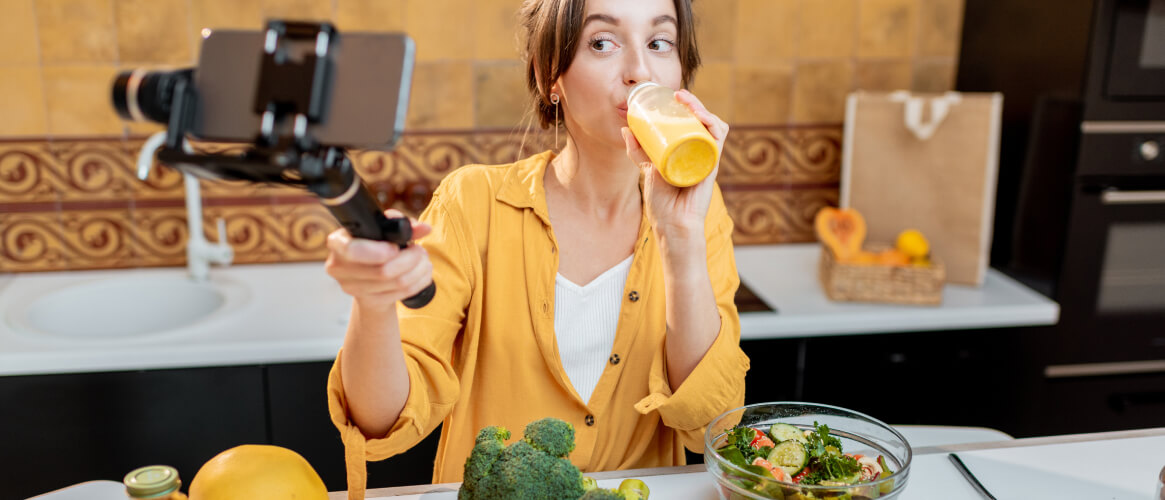Building Long-Term Relationships with Influencers: A Guide

By Kevin Kirby
Influencer marketing is a rapidly evolving landscape. When it first started gaining traction through social media platforms, it followed the more traditional format of macro influencers – large sports and celebrity names with brand endorsement deals.
As the way people use social media started shifting, however, influencer categories began to change as well, and today brands can leverage the power of nano-influencers for formidable results.

The rise of nano-influencers
People don’t just scroll through their Facebook, Instagram or TikTok feeds to see what big celebs are doing. Most feeds are filled by friends, acquaintances and nano-influencers who have built up small but loyal followings based on specific interests. These influencers are authentic, loyal to their audiences and what they care about, and they aren’t afraid of showing their more “human” side. This means that their posts aren’t perfect. In fact, they embrace a trend known as “flawesome”, which celebrates showcasing “real life” on social media instead of staged and airbrushed posts.
This focus on authenticity is no small thing – 88% of respondents to a Morning Consult study said it was important for influencers to be authentic and to genuinely care about their followers’ interests. The result is that although nano-influencers have much smaller followings than macro- and micro-influencers, engagement with their posts is exponentially higher.
In fact, our own experience at theSalt shows that engagement rates with nano-influencer posts can be up to 60% higher when compared to micro- and macro-influencers. These are friends and neighbours of many of their followers. They have often been met in person by people on their feeds and are well known in their circles. They answer private messages and take care to connect with their communities. Their opinions carry weight and they have carefully cultivated their expert status in their chosen niches. In other words, they are trusted.
This is one of the reasons conversion rates through nano-influencers tend to be higher than in celebrity, macro and brand-run campaigns. Trust matters. It’s that simple.
What brings this trust (and the conversation rates that naturally result from trust) into the creator marketing space, however, is the intersection of five critical elements:
- The rise of ordinary people who genuinely enjoy being influencers;
- People’s ability to create slick, entertaining content;
- How social media platforms support influencers and the “shopability” of their posts;
- Technology platforms that match nano-influencers and their audiences with brand and campaign values (such as theSalt); and
- The ability to leverage influencer marketing through performance campaigns.

The rise of influencers and the ability to create entertaining content
Morning Consult reveals that 54% of young Americans want to become influencers. We can assume that the same percentage of young South Africans – if not more – want to as well. Becoming a social media influencer is accessible to anyone who has a smartphone, enjoys creating content and is willing to share their insights, experiences and advice in a particular niche area.
There are so many resources available online for how to create engaging and meaningful posts that are creative while still being authentic – the world has become the influencer’s oyster. Influencer Marketing Hub’s stats say that 50-million people worldwide now consider themselves to be creators on social networks, and this number will continue to rise.
What brings influencers, their content and followers together for brands, however, is the fact that consumers no longer expect to keep the people they follow and where they shop separate. We look to influencers for brand, product and service advice as part of the product discovery journey. We want to know what they love and why. We want to hear about their experiences. And most of all, if we see something we like, we want to be able to make a purchase then and there. This is called making a post “shopable”.
Social media and the ‘shopability’ of posts
Social media networks monetise influencer content through their creator and social commerce tools. This means two things. First, they want to keep engagement as high as possible. The more influencers and creators are looking to their platforms to build audiences and monetise their side hustles, the greater the engagement and the numbers of users each platform will attract.
Second, the simpler their tools make it for influencers to showcase products in their feeds that followers can purchase then and there, the simpler social commerce becomes. In practice, this means you can see your favourite influencer sharing how much they love a pair of sneakers, and you can click on the post, purchase the sneakers and have them sent to you – without leaving the platform. It’s completely frictionless.
This is leading to a phenomenal rise in nano-influencers who are increasingly leveraging their side hustles.
Linking audiences with the right influencers and leveraging influencer campaigns
For marketing professionals, the challenge has become how to select the right influencer for your campaign. Previously, marketers looked for the biggest celebrity or sports name they could find (and afford). Nano-influencers have changed the game. Now, instead of broad strokes and a spray-and-pray approach, a campaign must identify the specific nuances of the audiences it is targeting and match them to the right influencers who have those followings and whose values align with the brand’s values.
The beauty of influencer marketing is that it is low risk. There are so many creative ways of incorporating influencers and what they can bring to the table into campaigns. You can use targeted sampling and redirect some of your brand-led budget to test influencers and amplify these posts with performance campaigns, for example. You will then be able to measure the results directly against your current campaigns without extending your budget, allowing you to make more informed future campaign decisions.
In our experience, influencer-led campaigns that are boosted by performance campaigns always have higher engagement and conversion results than brand-led campaigns, but if this is your first foray into influencer marketing leveraging nano-and micro-influencers, you can start small. The trick is to start – this landscape keeps shifting and growing and the more familiar you are with it, the more your brand can stay ahead of trends.
Find this content useful? Let's connect.
Building real connections with your audience starts with you and theSalt lets chat

Pieter Groenewald
CEO at Nfinity